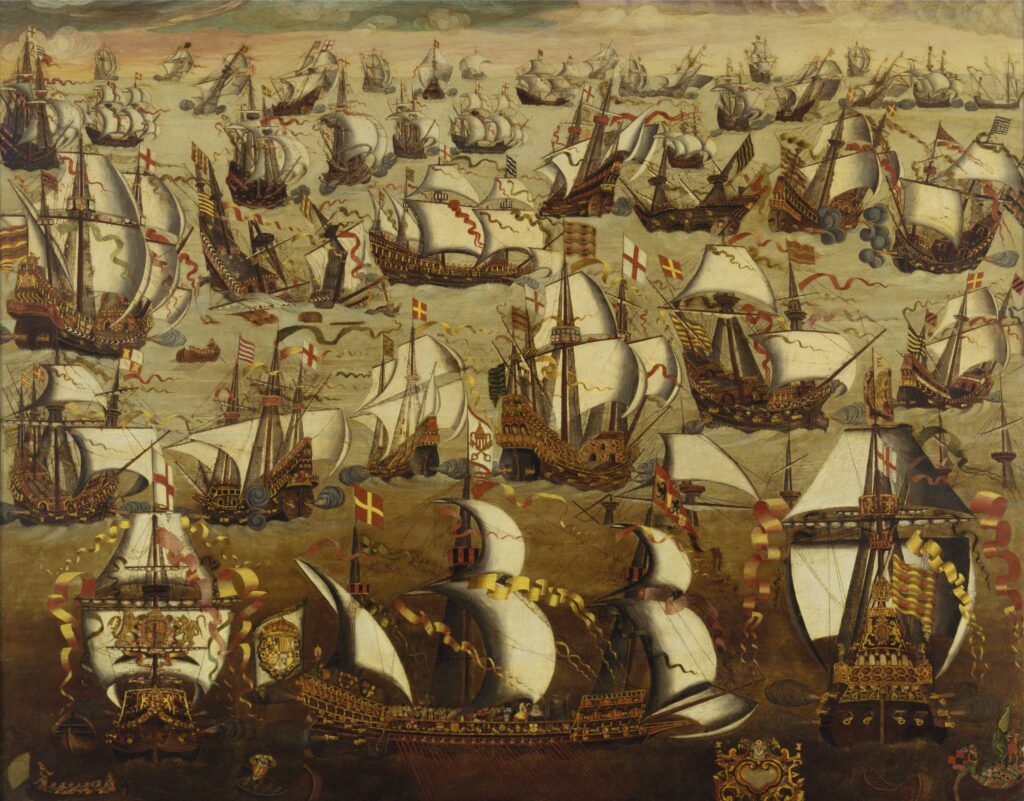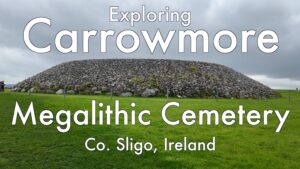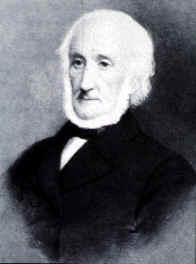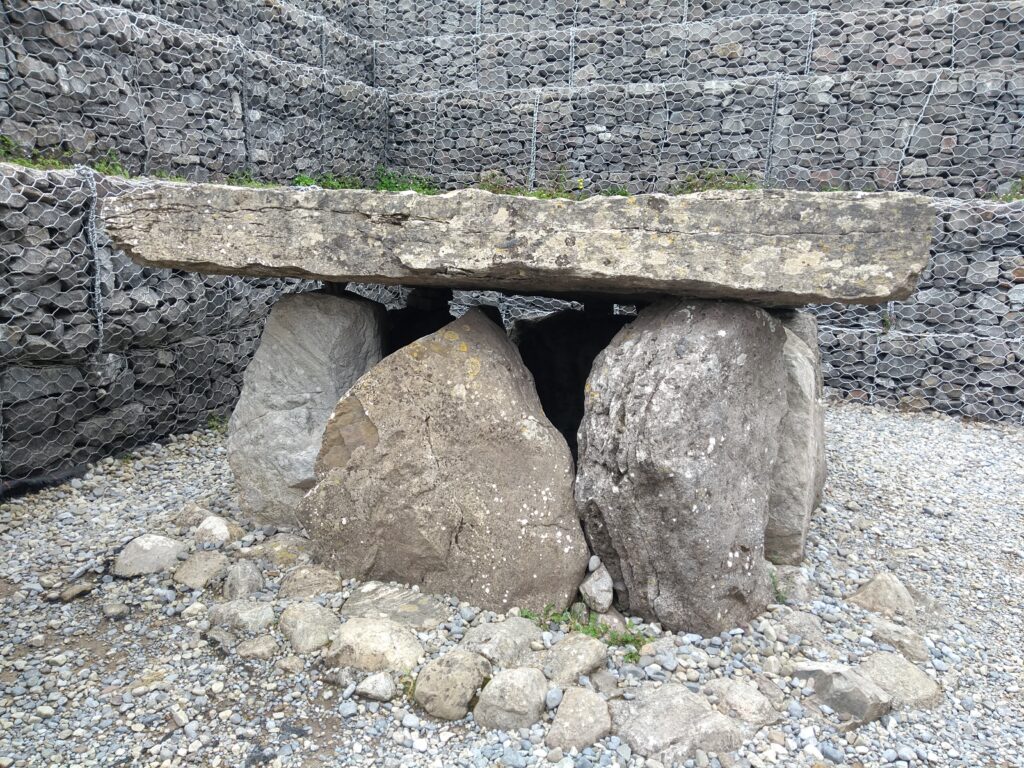
Spanish Armada
The notion that Spanish sailors from the ill-fated Spanish Armada settled Ireland after their ships sank off the Irish coast is an enduring myth.
The myth posits that these Armada survivors stayed in Ireland, intermarrying with the Irish in great enough numbers to create an entire segment of the population with dark complexion, dark eyes and dark hair – unlike many pale Irish. These individuals are referred to by some as the Black Irish.
There is virtually no evidence – circumstantial or otherwise – to support the connection to Spanish Armada survivors. The term Black Irish is not widely used in Ireland. But the origin and use of the term is a subject for another video.
There is significant historical evidence that most of the Spanish who survived were either captured and killed by Irish locals or the English. The small number who were not killed were either noblemen taken for ransom or those who found help from friendly Irish or Scottish chieftains who then helped them return to Spain.
The Spanish Armada was a fleet of 130 ships that was part of plan to invade England in 1588.

The English attacked the Armada in the English channel. The Spanish fleet scattered and the English pursed the defeated Armada.
Trying to return to Spain, some Spanish Armada ships wound up off the west coast of Ireland.
Fierce storms in September 1588 sank many of the damaged ships.
Between 17 and 24 ships of the Spanish Armada were lost on the Irish coast. This about one-third of the fleet’s total loss of 63, about 6,000 men were killed.[1]
Spanish Armada ships either made landfall or where wrecked at several locations in Ireland.
The galleass La Girona sank off Lacada Point, County Antrim, 26 October 1588. Of the 1,300 on board, there were nine survivors. 260 bodies washed ashore.
A storm a month earlier was even more deadly.
On 21 September 1588, three damaged vessels of the Spanish Armada were blown ashore during a violent storm on Streedagh Beach in what is now County Sligo, Ireland.
Accounts differ but about 1,800 men drowned, according to an account by Captain Francisco de Cuellar, one of the few survivors. Approximately 300 made it ashore.
“Over a thousand drowned among them many important people, captains, gentlemen and regular officers….many men drowned inside the ships, while others jumped into the water never to come up again.” — Captain Francisco de Cuellar
https://babel.hathitrust.org/cgi/pt?id=nyp.33433075880959&view=2up&seq=2&skin=mobile
Once ashore, most of the survivors were attacked by locals and robbed of everything, including their clothes, or they were attacked by English soldiers and slaughtered.
De Cuellar managed to survive a number of encounters with robbers and the English.
English soldiers in Ireland were ordered to kill any Spanish prisoners, England’s Lord Deputy William FitzWilliam instead of asking for ransom as was common during that period.
It was with the demise of these Spanish Armada ships is when the myth of Black Irish takes root.
So how did the myth of Spanish Armada survivors living in Ireland get started?
The historical record shows the Black Irish – Spanish Armada myth likely originates from local lore.
The first recorded references to descendants of the Spanish Armada among the Irish population are from the 20th century. All the references cite local stories as the source.
The first is from 1906, by British historian Maj. Martin A. Hume.
Hume points out there were too few Spanish Armada survivors to have made a difference in the Irish population and that centuries contact with Spain prior to the Armada would explain any “Spanish blood”.
“But it is certain the English at the time of the Armada prevented anything like a settlement of Spaniards there,” Hume wrote.
Hume’s remarks appeared in The Geographical Journal, XXVII: 5 (London, May 1906) p 448-449
The second reference is from British writer Lorna Rea’s 1933 book The Spanish Armada.
“A few others escaped. There were other Irish girls who pitied them and took them home and forgot they were enemies; so that even now on that coast a child is occasionally born whose dark hair and eyes and soft brown Southern skin testifies to it remote Spanish ancestry,” Rea wrote on page 160.
Rea does not question this account.
A third reference comes from Irish journalist T.P. Kilfeather. Kilfeather questions “the belief that men of Spanish appearance in County Galway [W Ireland] may be descendants of men who came ashore from the ships of the Armada and inter-married with the Irish…” — T.P. Kilfeather, Ireland: Graveyard of the Spanish Armada, 1967 p 63
About 5,000 men died by drowning, starvation or slaughter by local inhabitants and English troops, after their ships were driven ashore on the west coasts of Scotland and Ireland.
[1] Whiting, J. R. S. (1988). The Enterprise of England: The Spanish Armada. Gloucester: Sutton. p. 171. ISBN 9780862994761.
de Cuellar, Francisco. “Account of his service in the Armada and on the run in Ireland”.
T.P. Kilfeather Ireland: Graveyard of the Spanish Armada (Anvil Books Ltd, 1967)
thomas p. kunesh, 1981. “The myth of the Black Irish: Spanish syntagonism and prethetical salvation.” Published online at: www.darkfiber.com/blackirish/. Retrieved 25 May 2013.
Images:
Route taken by the Spanish Armada, Public Domain
https://en.wikipedia.org/wiki/Spanish_Armada_in_Ireland#/media/File:Routes_of_the_Spanish_Armada.gif
An Armada galeass, similar to Zuñiga, depicted in the anonymous Greenwich Cartoon, Unknown – National Maritime Museum, Greenwich, London, Public Domain
https://en.wikipedia.org/wiki/Spanish_Armada_in_Ireland#/media/File:Armada_galleass.png
“Treasures from the Girona” permanent exhibit — Ulster Museum, Stranmillis Road, Botanic Gardens, Belfast BT9 5AB, Northern Ireland, https://commons.wikimedia.org/wiki/User:Bbaldwin7
View over Port-Na Spaniagh toward Lacada Point, c.1888. Robert John Welch, photographer (died, 1936) – Public Records Office of Northern Ireland — (photo print, c.1888), Public Domain, Port-Na Spaniagh c.1888 – Girona (ship) – Wikipedia
Destrucción_de_la_Armada_Invencible,_de_José_Gartner_de_la_Peña_(1892).jpg, José Gartner
, Public DomainFile:Destrucción de la Armada Invencible, de José Gartner de la Peña (1892).jpg – Wikimedia Commons
English Ships and the Spanish Armada, August 1588 RMG BHC0262.jpg, https://commons.wikimedia.org/wiki/File:English_Ships_and_the_Spanish_Armada,_August_1588_RMG_BHC0262.jpg
The English pursue the Spanish fleet east of Plymouth on 31 July – 1 August 1588 RMG D3294.tiff, Public Domain
English fireships launched at the Spanish armada off Calais, Royal Museums Greenwich Collections, Public Domain
Spanish Armada fireships – Spanish Armada – Wikipedia
Defeat of the Spanish Armada, August 8, 1588 – painted by Philip James de Loutherbourg (1796), Public Domain
Loutherbourg-Spanish Armada – Spanish Armada – Wikipedia
Elizabeth I and the Spanish Armada; the Apothecaries painting, sometimes attributed to Nicholas HilliardPublic DomainLa batalla de Gravelinas, por Nicholas Hilliard – Spanish Armada – Wikipedia





